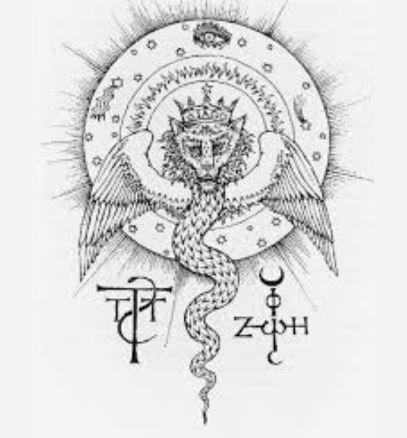Theurgy

Theurgy is a term that refers to a set of spiritual practices aimed at invoking or communing with divine beings, deities, or other supernatural entities. The word itself comes from the Greek theourgia, which means "divine work" (from theos, meaning "god," and ergon, meaning "work" or "action"). Theurgy was primarily practiced in ancient Greco-Roman religions, particularly in the philosophical traditions of Neoplatonism.
The primary goal of theurgy is to establish a direct connection with the divine or to achieve spiritual ascent. Unlike other forms of magic that may be aimed at material or mundane results, theurgical practices are often focused on the soul's purification and its elevation toward the divine realm.
Theurgy was popularized by philosophers such as Iamblichus, who emphasized that the act of invoking gods and spirits could purify the soul and help it transcend the physical world. It was seen as a way to achieve union with the divine, often through rituals, prayers, and symbolic actions.
In short, theurgy is deeply rooted in ancient mysticism and was considered a sacred practice aimed at spiritual enlightenment. It's a complex and esoteric tradition, and its influence can still be found in certain mystical and occult traditions today.
Theurgy, as a mystical and spiritual tradition, had significant influence in the ancient world, particularly within the Neoplatonic philosophical tradition. Let's dive into some of the key figures, practices, and ideas associated with theurgy.
1. Key Figures in Theurgy
Iamblichus (c. 245 – 325 CE)
Iamblichus was a prominent philosopher and mystic in the late stages of the Roman Empire. He is one of the most important figures in the development of theurgical practices. His major work, De Mysteriis ("On the Mysteries"), outlines his views on theurgy as a method for the soul's purification and ascent toward the divine.
Iamblichus argued that theurgical practices were superior to philosophical contemplation alone because they involved direct interaction with the divine. According to Iamblichus, a person could not elevate their soul simply through reason and intellect; they needed the aid of divine beings through rituals and invocations. This view contrasts with the more intellectual approach of Plato and Plotinus, who emphasized contemplation and philosophy.
Plotinus (c. 204 – 270 CE)
Plotinus is another key figure in the history of theurgy, although he didn’t practice theurgy himself. As the founder of Neoplatonism, Plotinus believed in the concept of the One (the ultimate reality), and he focused on the soul's ascent toward the One through philosophical contemplation.
Although Plotinus did not endorse theurgical rituals, his ideas influenced Iamblichus and other theurgists, especially regarding the soul's ascent toward divine unity. Plotinus viewed the material world as a lesser realm, and he believed that the soul could purify itself through philosophical study and contemplation, ultimately achieving unity with the divine.
Proclus (c. 412 – 485 CE)
Proclus was a later Neoplatonic philosopher who followed in the footsteps of Iamblichus and further developed the idea of theurgy. He incorporated much of the theurgical thought into his own philosophy, arguing that theurgy was necessary for the soul's return to the divine. Proclus wrote extensively on the role of rituals, prayers, and divine intervention in the ascent of the soul.
2. Theurgical Practices
Theurgical practices were highly ritualistic and often involved invoking deities, angels, or other divine spirits to aid in the purification of the soul. Here are some common elements found in theurgical rituals:
Invocations and Prayers
Theurgical rituals typically involved invoking the names of gods and divine beings through prayers, hymns, and incantations. These invocations were not just for the sake of communication; they were believed to bring about a transformation in the practitioner, helping to purify the soul and elevate it to higher spiritual planes.
Sacred Symbols and Objects
Rituals often made use of sacred symbols, talismans, and objects that were believed to have inherent power. These could include magical seals, amulets, and sacred texts. These objects were considered conduits for divine energy and were believed to assist in the theurgic process.
Rituals of Purification
Purification was a central concept in theurgy. The soul, according to the theurgists, was often weighed down by its attachment to the material world, and it was through rituals of purification that the soul could be cleansed of its impurities. This could involve practices like fasting, bathing, and other forms of spiritual cleansing.
Sacrifices and Offerings
Sacrifices, often in the form of offerings of incense, food, or other material goods, were made to the gods during the rituals. These offerings were believed to establish a connection with the divine and to invoke the gods' presence. In some cases, animal sacrifices were performed, although these were not always part of every theurgical practice.
Divine Possession or Ecstasy
In some theurgical practices, the practitioner would enter a state of trance or ecstasy. This was believed to be a means of achieving direct communion with the divine. During these altered states of consciousness, the practitioner might receive visions or guidance from divine beings, further aiding in the soul's ascent.
3. The Goal of Theurgy
The ultimate goal of theurgy was the soul’s ascent toward the divine. The practitioners believed that through their rituals and invocations, they could transcend the material world, purify their souls, and achieve unity with the divine realm. This process was seen as a kind of divine return—since, according to Neoplatonic thought, the soul originally came from the divine but became trapped in the material world.
Union with the Divine
The soul's union with the divine was the highest spiritual goal of theurgy. This union was not merely intellectual or philosophical but a mystical, experiential connection with the divine. The soul was believed to achieve this union through the power of the gods, angels, and other spiritual beings who could help guide it back to its divine origin.
4. Theurgy and its Legacy
Theurgy’s influence extends beyond ancient Neoplatonism. It had an impact on later mystical and esoteric traditions, particularly in the Renaissance, where philosophers like Marsilio Ficino and Giovanni Pico della Mirandola sought to revive Neoplatonic thought and theurgical practices. The concept of divine ascent through ritual and prayer also influenced later religious and occult movements, including certain strands of Hermeticism and ceremonial magic.
In modern occult traditions, theurgy is still practiced in some forms, particularly in the context of the Hermetic Order of the Golden Dawn, Thelema (founded by Aleister Crowley), and other mystical groups.
5. Criticism of Theurgy
Despite its appeal to many, theurgy faced criticism, especially from more rationalistic philosophers like Plotinus, who believed that such practices were unnecessary and potentially dangerous. Some critics argued that theurgy could lead to superstition or manipulation by charismatic leaders, while others feared that it might corrupt the soul’s ability to attain true wisdom through reason alone.
Conclusion
Theurgy represents a deeply spiritual and esoteric path that seeks divine union through sacred practices, rituals, and invocations. Though rooted in Neoplatonism and the mysticism of late antiquity, its ideas and practices continue to influence modern spiritual and occult traditions.

